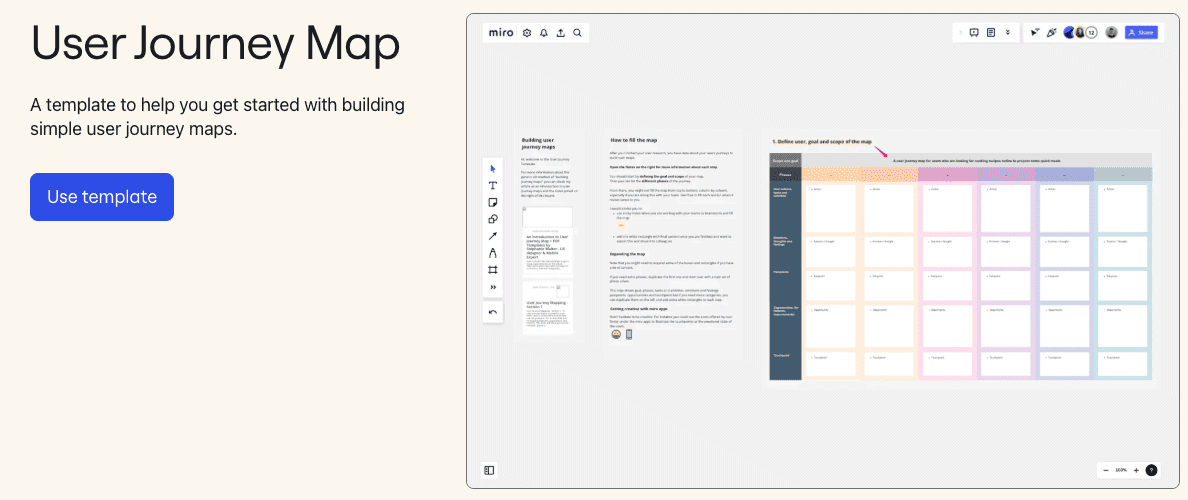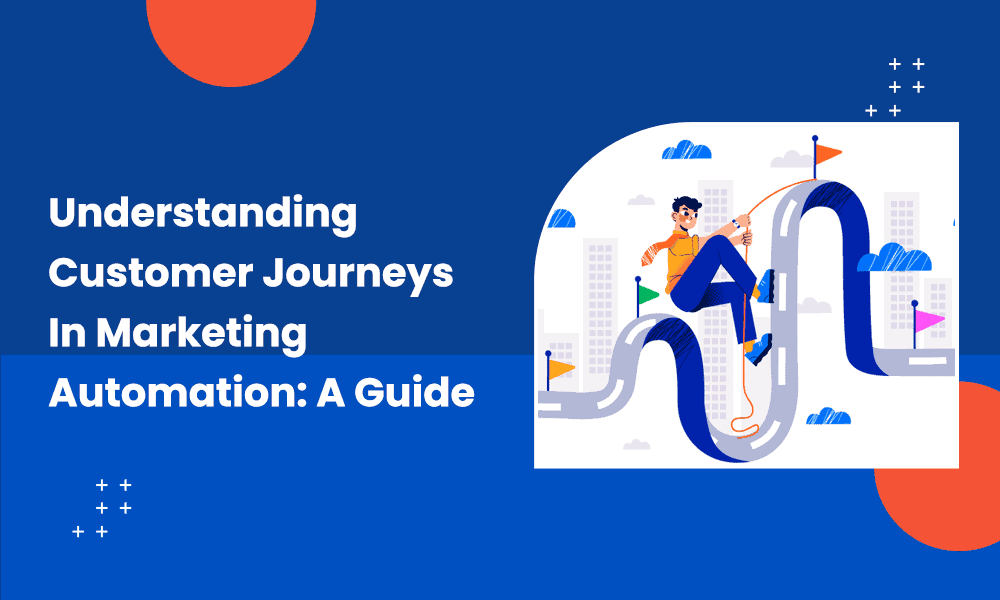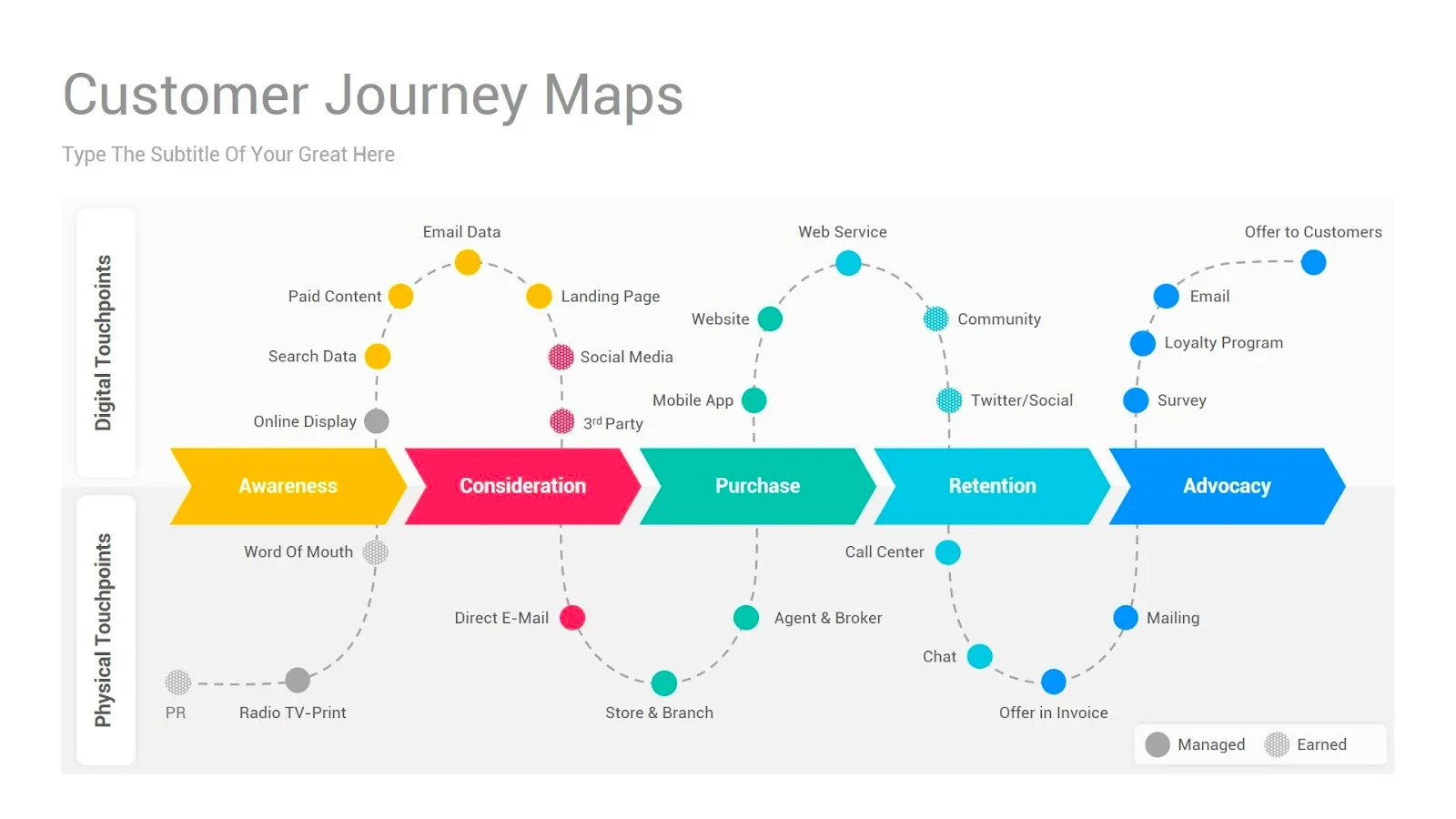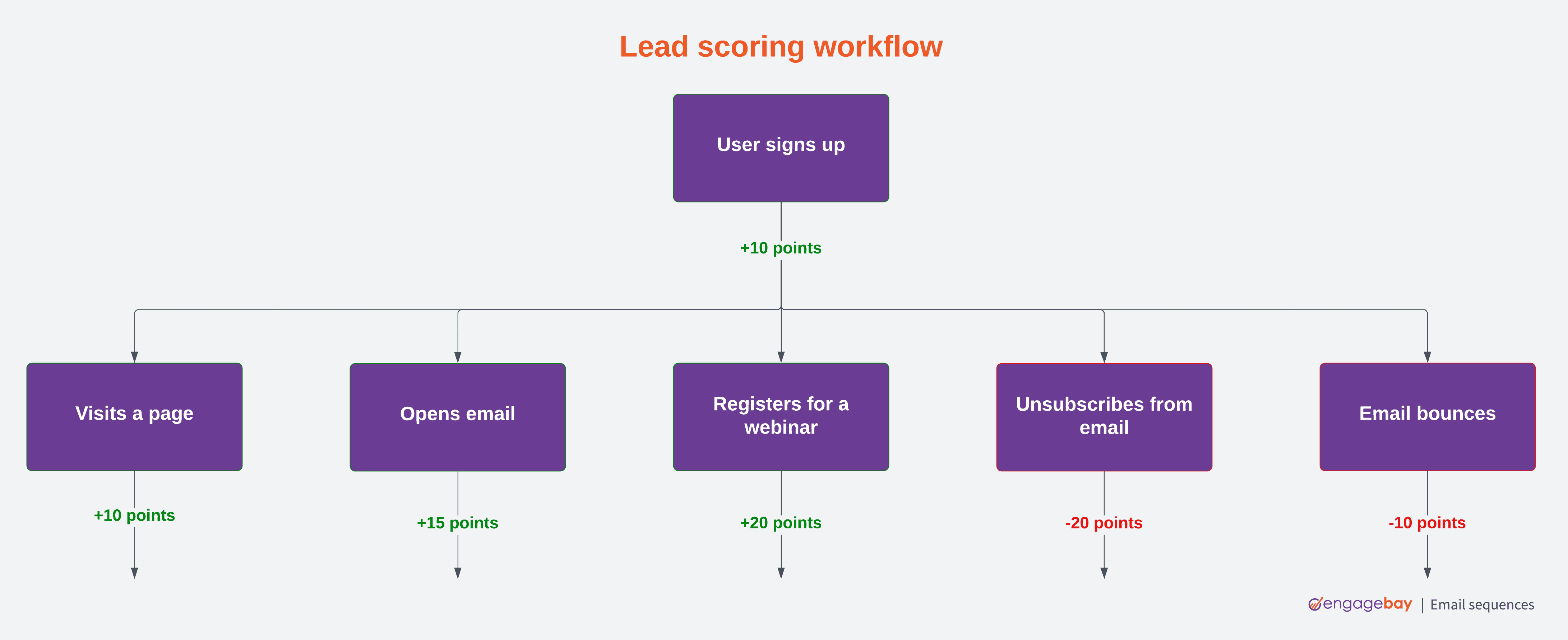Think marketing automation and automated customer journeys come to mind. And why not? They are perfect for engaging, converting, and retaining customers at scale.
67% of marketers use them. Most marketing automation tools use drag-and-drop customer journey automation builders to make it easy. Are the results worth it in terms of performance and efficiency? You bet!
However, automated journey builders cannot independently identify customer needs and expectations. Well, at least not yet!
The problem is that 29.6% of brands don’t have a clear view of the customer journey. This limits the value they can get out of marketing automation. So before implementing it, why not go on your journey into your customers’ minds?
It’ll help you understand the emotions and decision-making patterns that drive purchase decisions. Get this right, and your ROI from marketing automation will soar to a whole new level.
In this blog, you’ll learn how to map customer journeys and build effective marketing automation workflows on top of them. Let’s get started.
Table of Contents
What Is Customer Journey Mapping?
A customer journey map is a visual representation of the steps customers take as they make their way through your marketing funnel. It allows you to meet their needs and close sales faster. Customer journeys are dynamic and can change depending on:
- The number of touch points or channels customers interact with your brand
- The needs and aspirations of different customer personas or buyer groups
- How your funnel is set up
The starting point of a customer journey is when a visitor first engages with your brand.
From there, it will branch out across websites, mobile apps, social media, chat, search, online marketplace, and other touchpoints. Each journey involves multiple decision points that will eventually turn a first-time visitor into a paid customer and, in time, a brand advocate.
With a customer journey map, you can pinpoint how to help customers get the most out of your product and open up new opportunities for upsells and cross-sells.
There are a lot of elements here that must align perfectly for this to work.
As a marketer, that means you have to tweak your internal processes and workflows to facilitate a seamless customer experience in a way that meets your business goals.
How Do You Map a Customer Journey?
Here’s the step-by-step process for mapping the customer journey.
1. Define the goals
It’s important that your customer journey map aligns closely with your marketing objectives and KPIs.
This will help you put performance into perspective and choose goal-oriented marketing strategies.
For example, if the goal is increasing lead numbers, you could focus on top-of-the-funnel activities like email subscriptions, webinars, lead scoring and qualification, etc.
2. Create your buyer personas
From awareness to loyalty, you’ll need to create multiple customer journeys for different customer personas.
But first, ask yourself who your target customers are and what they want. The answers are all around you. Start analyzing surveys or competitor research to define the key customer personas.
Then, plug in demographic, behavioral (subscriptions, page views, email engagement), and location data to understand their decision-making process.
Don’t create fictional personas. Instead, tie the insights to an existing customer that best fits each ICP. This makes them much more realistic and relatable. Continue to update your personas as you come across new insights.
Examples of buyer personas:
- Ecommerce Entrepreneur Emma”: Owns a small online store, needs automation to send abandoned cart emails and promotional campaigns.
- “Marketing Manager Mark”: Works for a mid-sized business and wants advanced segmentation and analytics to optimize campaigns.
3. Identify key touchpoints

Next, look at the current customer journey across your website, social media, mobile app, SMS, online marketplaces, etc. Use tools like Google Analytics to identify website activity patterns. Do the same for social media channels, email marketing, etc.
Correlate the data across all stages of the customer journey to identify the channel paths that may be broken. For example, generic offers are at the top of the funnel.
For example, a travel agency tracks the customer journey from discovery to booking. Using Google Analytics and email tracking, they find that:
- Customers discover the agency via Instagram ads and blog content.
- Many visit the website but abandon the booking page due to unclear pricing.
- Follow-up emails with a personalized offer help recover 20% of those lost bookings.
4. Create or choose a customer journey map template
There are lots of tools to help you create a customer journey map. Here are some of the most popular ones:
You can get templates and customize them or create your own from scratch. Here’s an example journey map from Miro:

Why Use Customer Journey Mapping in Marketing Automation?
Customer journey mapping can provide a strong foundation for your marketing automation stack. Here are some of its many advantages.
1. Consistent messaging across channels
Research shows that it can take up to 8 interactions for a lead to convert into a paying customer.
You may have a great offer and workflow, but if the messaging isn’t consistent and relevant (for the channel as well as the journey stage), you’re not going to make much headway.
For example, leads clicking on a social media ad should get details related to the same offer on your website or landing page. It should also be personalized to specific pain points and age groups. Customer journey mapping can help sync multiple channels and ensure relevant messaging for different journey stages and customer personas.

2. Drive customers deeper into your funnel
From a strategic perspective, the goal of marketing is to give customers the right information at the right time to make purchase decisions.
Customer journey mapping enables you to segment leads better and deliver targeted content on how your product solves their problem, how it compares with other alternatives, and address objections before hand-off to sales.
3. Better engagement
With customer journey mapping, you’ll appreciate customer expectations better than ever before. This means you can quickly smooth over any rough edges in your marketing funnel.
This includes optimizing your product categories, checkout page or website navigation, and so on.
Leveraging behavioral data, you can create effective campaigns for each journey stage and build trust with customers. This will not only drive sales but also improve loyalty and referrals.
4. Higher customer lifetime value
A customer journey map helps brands discover customer preferences and provide a more personalized experience.
You’ll be able to spot upsell and cross-sell opportunities rapidly and pitch them at the right moments.
As the relationship deepens, you can also develop better rewards and incentives based on performance data, which will have long-term benefits for your business.
5. Time savings
In the present scenario, you can hardly choose between customer acquisition and customer retention.
You’ve to focus on both. Thankfully, customer journey mapping does help you focus on high-value leads, develop targeted content for all stages, and automate repetitive tasks like scheduling emails or follow-up messages.
You’ll be able to identify what tasks to automate and how to create a responsive marketing process.
This means more time to think ahead and focus your energies on creating unique offers. While customer journey mapping is by no means a one-time affair, the right strategies can reduce your workload quite a bit.
6. Scale at low cost
With customer journey mapping, small teams don’t need to be intimidated by the thought of scaling campaigns. The key is to optimize your customer journey map based on performance.
You should be able to add new touchpoints, segment audiences, and run multi-channel campaigns quite effectively.
The ripple effect of this will be felt across the funnel – effective lead qualification, higher conversion rates, and repeat sales – at more or less the same cost.
How Do Customer Journey Mapping and Marketing Automation Complement Each Other?
Quite simply, customer journey automation makes marketing campaigns more responsive and intelligent. Here are some areas where it can generate immediate results.
1. Product recommendations
To predict buyer intent, marketing automation tools can analyze purchase history, clicks, views, etc. This data will then suggest products they are likely to be interested in.
2. Dynamic website content
A lot of eCommerce, airline, and travel websites will alter prices in real-time based on location, time of year, and other conditions. They can display real-time notifications relating to new arrivals and discounts.
3. AI chatbots
AI enables highly conversational interactions with prospects, asking contextual questions based on their emotional state. This is a game-changer for brands now and in the time to come.
Enhance Your Email Marketing
Want to make your emails more impactful? Check out our beautiful, easy-to-customize customer support email templates. Designed to boost engagement, these templates from EngageBay will help your emails stand out. Just customize the images, headings, and CTAs for your brand, and hit send in a few minutes!
Activities for Various Stages of the Customer Journey
The typical customer journey starts with awareness, followed by the consideration, purchase, and retention phases. Let’s look at the activities that are typical for each phase.
1. Awareness
This phase is marked by customer actions like downloading lead magnets or email newsletter opt-ins.
2. Consideration
The focus then shifts to comparing features and pricing by checking out e-books, blogs, case studies, reviews, and signing up for demos.
3. Purchase
You’ll see activities like adding items to the cart, search queries regarding color, size, and other product specifications, applying discount codes, confirming orders, etc., at this stage.
4. Post-purchase
At this phase of the customer journey, the types of actions you can expect include reading how-to content, leaving social media reviews, referrals, subscription renewals, refund or return queries, etc.
5. Data analysis
Now that you have identified the key customer journey stages, use the data collected to find out how customers engage at each stage. For example, the average time they spend at each stage, what actions they take, and how long it takes for them to move to the next stage.
Use your marketing goals and KPIs as a benchmark to identify the triggers for making decisions and their state of mind when making those decisions.
6. Testing
Customer journeys are never static for long. As you need new channels, look out for changing trends, test your findings, and update your customer journey map on a regular basis.
Don’t wait for negative CSAT surveys, poor conversion or social media reviews are all signs you need to revisit your customer journey mapping strategy.
Read also: Marketing Automation For Startups, The Simple Way
Creating a Customer Journey Automation Strategy
To succeed, your customer journey automation plan will need to closely match your overall customer journey map and business goals.
Here’s a step-by-step approach to finding the right opportunities for automation.
1. Make a process map
The first step is to map each stage of the customer journey to the respective internal processes and workflows.
For example, at the awareness stage, you’d have landing pages, contact forms, lead scoring, and so on. Make sure you break down the sequence of workflows and decision points (if/then conditions) required under each process.
Now, look for repetitive processes that need multiple inputs to complete. These processes are usually the most time-consuming, with the highest chances of error. They should be among the first to be automated.
2. Identify the processes that can be automated
Some processes, like lead scoring, are more data-driven and rule-based, making them perfect for automation.
Other tasks like designing welcome emails or content strategies need the human touch. These tasks are dynamic and need a lot of personalization. The key is to weigh the complexity of each process and be realistic about what can and cannot be automated.
3. Align your campaign objectives
Now that you have a process map and know what workflows to automate, think about your campaign objectives for the next quarter. For example, ‘reduce cart abandonment by 10%.’
Align the campaign objectives to specific KPIs based on the average performance for this quarter. This can help you personalize your campaigns more effectively, driving conversion and ROI.
👉 Enhance your marketing efforts with our free, customizable email templates that drive results.
Read also: Work Smart, Not Hard: Top Marketing Automation Ideas
Using The Customer Journey In Your Marketing Automation
Customer journey mapping can clear the path to automating workflows across all sales funnel stages. It can be used to:
1. Track lead behavior across multiple channels at the awareness stage
Marketing automation tools can track lead activity across channels for effective nurturing.
You can use automated forms to capture leads at the top of the funnel, score them automatically, and optimize every touch point you have. Thanks to real-time data, you can track interactions and use personalized offers to increase the possibility of conversion.
2. Drive personalization at the consideration stage
Using customer journey marketing automation, you can nurture leads via triggered email sequences and register them for webinars or free consultations.
With the data you collect on sign-up, you can segment your email marketing list and effectively retarget leads that show intent but don’t convert.
Read also: How to Maximize Customer Engagement With an Email Journey
3. Drive engagement and conversion
With customer journey marketing automation, you can quickly identify high-value leads.
For this, analyze engagement data (email opens, email clicks, page views) and send personalized product recommendations and demo links to move them toward conversion.
If they make a purchase, you can run a new sequence comprising welcome emails and order confirmation messages followed by upsell offers. These messages should build on each other to drive repeat sales and retention.
4. Build loyalty in the post-purchase stage
Most CRM tools let you set thresholds for average order value, purchase frequency, reward points earned, etc. Upgrade top spenders to VIP status or send promo codes to customers who may have looked at a product but didn’t purchase.
With customer journey automation, you can create cross-sell and up-sell campaigns via email, SMS, and other channels to drive customer lifetime value.
In other words, customer journey automation can speed up the sales cycle and drive revenue more efficiently and consistently.
Read also: Marketing Automation Best Practices for the Non-Technical Marketer
How To Choose the Right Customer Journey Automation Platform for Your Needs?
The key to making the right choice is to assess your needs and come up with a checklist that covers the following.
1. Features and capabilities
Based on your campaign objectives, you can quickly pinpoint the specific features needed for customer journey automation.
For example, lead scoring, CRM, reporting and analytics, etc. However, make sure the features and workflows save you time. A free trial is a great way to try out all the features before you buy.
2. Cost
For most small businesses, it’s probably best to go in for a starter plan with basic features and upgrade incrementally over time.
Investing in an all-in-one solution like EngageBay can also be a safer option than multiple tools, which could pose challenges regarding integration and training time. Consider data protection and compliance requirements.
3. Scalability
Think about your future needs three to five years down the line. The customer journey automation tool you choose should be able to support additional workflows, reports, and users as you scale over time.
4. CRM integration
For a seamless customer journey, you’re going to need a unified database.
It can simplify lead management and marketing campaigns as contacts can be synced immediately. You can get better quality reports, potentially increasing marketing effectiveness and boosting ROI.
A comprehensive CRM and marketing automation platform like EngageBay fits the bill perfectly.
Best customer journey automation tools
- EngageBay: A powerful all-in-one marketing, sales, and support automation tool designed for small businesses. It offers a visual journey builder, omnichannel automation (email, SMS, chat), and deep CRM integration to personalize interactions.
- ActiveCampaign: Known for its robust email and customer journey automation, ActiveCampaign uses behavior-based triggers and dynamic segmentation to deliver highly personalized experiences. Ideal for eCommerce and SaaS businesses that need advanced lead nurturing.
- HubSpot: A comprehensive CRM and marketing automation platform with an intuitive workflow builder for mapping and automating customer journeys. It integrates email, chat, and social media automation, making it great for growing businesses.
- Klaviyo: A top choice for eCommerce businesses, Klaviyo provides powerful automation for email and SMS marketing. It leverages real-time customer behavior and AI-driven insights to optimize customer journeys and increase sales.
Conclusion
Now that you know the ins and outs of customer journey mapping and how to use it for marketing automation, there’s only one thing to be done – implement a proven marketing automation solution that can help you quickly build and optimize your marketing workflows.
We’d recommend EngageBay. With its drag-and-drop automation builder, EngageBay helps you discover and respond to engagement opportunities and deliver a delightful customer experience.
Sign up for a free trial today!
👉 Have you tried our email templates? Share your experience in the comments below, and let us know how they worked for your campaigns!



